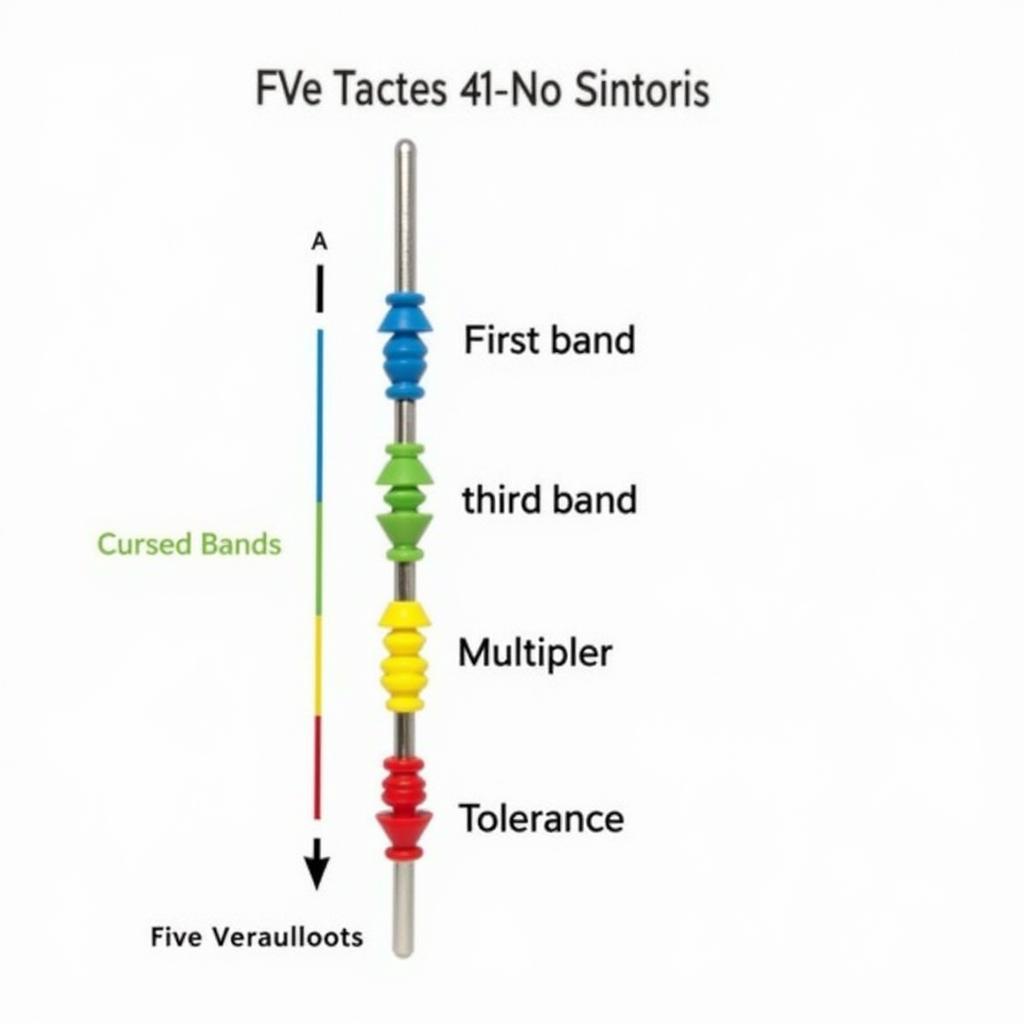Resistors, those tiny components found in virtually every electronic circuit, play a crucial role in regulating current flow. Understanding their resistance value is essential for any electronics enthusiast or professional. This value is often indicated by a series of colored bands, known as the resistor color code. Mastering how to remember resistor color code quickly and accurately is a fundamental skill in electronics. This article will provide you with various effective methods and tricks to decode these colorful bands with ease.
 Resistor Color Code Chart for Electronics
Resistor Color Code Chart for Electronics
Understanding the Resistor Color Code System
The resistor color code system uses colored bands to represent the resistance value, tolerance, and sometimes the temperature coefficient. Most commonly, you’ll encounter resistors with four or five bands. Four-band resistors specify the resistance value and tolerance, while five-band resistors offer greater precision by adding a third significant digit.
Each color corresponds to a specific numerical value, and their position on the resistor determines their significance. Starting from the band closest to the edge, the first two or three bands represent the significant digits of the resistance. The next band is the multiplier, indicating the power of ten to multiply the significant digits by. The final band, separated by a slightly larger gap, indicates the tolerance, representing the possible variation in the actual resistance value.
Mnemonics and Rhymes for Remembering Resistor Color Codes
Many helpful mnemonics and rhymes have been devised over the years to help memorize the color code. Here are a few popular ones:
-
“Big Boys Race Our Young Girls But Love Fine Gold”: This mnemonic represents Black, Brown, Red, Orange, Yellow, Green, Blue, Violet, Grey, White, Gold.
-
“Bad Beer Rots Our Young Guts But Vodka Goes Well”: Another variation focusing on the first letter of each color.
These mnemonics can be helpful, but it’s crucial to understand the underlying logic of the color code system.
Using a Color Code Chart
While mnemonics can be handy, a resistor color code chart is an invaluable tool for quickly and accurately determining resistance values. These charts are readily available online and in electronics textbooks. You can even print a pocket-sized version to carry with you. Simply match the colors on the resistor to the corresponding values on the chart to decode the resistance.
Online Resistor Color Code Calculators
In the digital age, several online resistor color code calculators are available. These tools provide a quick and convenient way to decode resistor values. Simply input the colors of the bands, and the calculator will instantly display the resistance, tolerance, and other relevant information.
Practical Tips and Tricks
-
Start from the End: Identify the tolerance band first, usually gold or silver, separated by a larger gap. This helps you orient the resistor correctly.
-
Use a Magnifying Glass: For smaller resistors, a magnifying glass can be helpful in distinguishing the colors accurately.
-
Good Lighting: Ensure adequate lighting when reading resistor color codes, especially with dimly lit colors like brown and black.
Why is Knowing the Resistor Color Code Important?
Understanding the resistor color code is essential for several reasons:
-
Circuit Design: Accurately determining resistor values is crucial for designing and building electronic circuits.
-
Troubleshooting: When troubleshooting faulty circuits, knowing the resistor color code allows you to quickly identify incorrect resistor values.
-
Component Replacement: If a resistor needs replacement, you can easily determine its value using the color code.
Mastering the Resistor Color Code: Practice Makes Perfect
The key to mastering the resistor color code is practice. Regularly decode resistor values using different methods, such as mnemonics, charts, and online calculators. The more you practice, the faster and more confident you will become. can bus wire colors plays an important role in understanding resistor.
 Five-Band Resistor Color Code Example and Calculation
Five-Band Resistor Color Code Example and Calculation
Conclusion
Remembering the resistor color code is a fundamental skill for anyone working with electronics. By utilizing mnemonics, color code charts, online calculators, and consistent practice, you can quickly and accurately decode resistor values, enabling you to confidently tackle any electronics project. Mastering this skill will significantly enhance your understanding and ability to work with electronic circuits.
FAQ
-
What are the most common resistor tolerance values? Common tolerances include 5% (gold), 10% (silver), and 1% (brown).
-
What does a missing tolerance band indicate? A missing tolerance band typically indicates a 20% tolerance.
-
Are there resistors with more than five bands? Yes, some specialized resistors have six bands, typically indicating the temperature coefficient.
-
What if the colors on the resistor are faded or difficult to see? Use a multimeter to measure the resistance directly.
-
Where can I find a reliable resistor color code chart? Numerous online resources and electronics textbooks provide reliable color code charts.
-
What is the purpose of the multiplier band? The multiplier band indicates the power of ten to multiply the significant digits by.
-
What are some common mistakes when reading resistor color codes? Common mistakes include misinterpreting colors, incorrect orientation, and confusing the multiplier and tolerance bands.
For further information about electronic components, check out this article on can bus wire colors.
Need more assistance? Contact us at Phone Number: 0373298888, Email: [email protected] or visit our office at 86 Cau Giay, Hanoi. We have a 24/7 customer service team ready to help.

